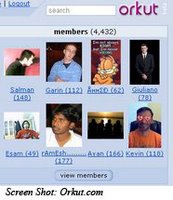Welcome
Attention, editors: Here's your chance to run some terrific stories about the changing media landscape. The new media concentrators at Columbia's Graduate School of Journalism have reported on and written about the latest issues in online news. Handheld technologies, the rising popularity of citizen journalism and the emergence of "blogsuits" are just a few of the things that we have explored, in-depth. If you are interested in running these stories, for pay and/or for credit, please contact the individual reporters via email. Also, please CC Sheena Tahilramani at sat2127@columbia.edu so we can keep track of publication requests. Here are the headlines, followed by short abstracts of each article:
- Creative Expression or Mere Mischief? Team Reck's Vlogs
- Mailing Lists Live On in the Digital Age
- The Unpredictability of Online Social Networking
- Anne Sachs Leads a Fresh-Faced ElleGirl.com
- Journalism in the Age of Second Life
- Gothamist: Changing the Way People Receive their News
- Current TV Takes Video Blogging a Step Further
- Wall Street's online customers willing to pay to read news articles
- MySpace and Facebook Keep Twixters From Moving Away from Home
- Mobile ESPN: Betting on Cricket
- The Vlog Revolution
- Community Websites: East Harlemites Combat Perceived MSM Bias and Neglect
- Lemann Adds Fuel to a Fiery Debate
- Bloggers Beware: Internet Libel Lawsuits--What the Blogosphere can Learn from its Most Sued Blogger
- An Effort to Preserve Multimedia Archives
- Internet Multitasking Syndrome
- Blogs: Getting the Scoop
- Internet Access: A Playground for Self-Promotion
- The Pandora Phenomenon
- Open Source Journalism and NewAssignment.net
- YouTube: A Place to Break Television News?
- The Future of Video on Demand
- Alissa Swango and the Depths of "New Media"
- Handheld Technology Changes Everything
- Bronx Blogger: What One Reporter Learned from Blogging the Yankees
- Beyond the Music: Visual Artists Are Using MySpace to Further Their Work
- Why is SI.com struggling? Mike McAllister on What Needs to Change
- A Tricky Business: Corrections in Online Stories
- Hector Feliciano Leaps from Print to Blogging
- Confessions of a Journalist Digger
- Reaching God in Broadband: Christianity and the Rise of Viral Video
- The Internet: A Modern Day Cookbook
- MySpace Comes of Age
- "Blogsuits" What Effect will Libel Threat Have on the Blogosphere? (Podcast)


















